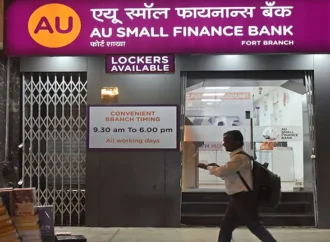India’s office leasing market is set to grow 8-10% in FY26, driven by strong demand from BFSI and GCCs, especially in Bengaluru and Hyderabad. Flex space operators are expanding rapidly, while vacancy rates are expected to decline. Crisil Ratings highlights stable financials, though economic risks remain a key concern.
India’s commercial office space sector is set to witness an 8-10% rise in net leasing in FY26, driven by strong demand from banking, financial services, insurance (BFSI), and global capability centres (GCCs), according to a recent report by Crisil Ratings. This follows a robust 14-16% growth in FY25, surpassing pre-pandemic levels and exceeding initial forecasts.
GCCs remain the key driver of leasing activity, contributing 30-40% of total net leasing across IT/ITeS, BFSI, and manufacturing sectors. With more GCCs emerging and existing ones expanding, leasing demand is expected to remain concentrated in Bengaluru and Hyderabad, accounting for about two-thirds of GCC-driven leasing.
“From a sectoral perspective, 8-10% growth in net leasing next fiscal will be driven by double-digit growth of BFSI players and flex space operators,” said Gautam Shahi, Director at Crisil Ratings. “Non-banking financial companies and private sector banks will see steady growth due to higher assets under management and workforce expansion. Flexible space operators will also scale up in Tier I and II cities, offering cost-effective and hybrid-friendly solutions.”
Despite continued momentum in office leasing, growth in IT/ITeS, manufacturing, and engineering sectors is expected to be moderate, with leasing demand increasing in the mid-single digits. Meanwhile, the Grade A office space supply is set to expand, with 52 million sq ft expected to be completed in FY25 and 55-58 million sq ft in FY26. Nearly half of this supply will be concentrated in Bengaluru and Hyderabad, fueled by GCC demand.
With supply growth slightly trailing leasing activity, vacancy rates will decline to 17% over the next two fiscal years. “Improving occupancy levels and steady rental growth will enhance cashflows for Crisil-rated office space players, maintaining healthy credit profiles despite ongoing portfolio expansions,” said Snehil Shukla, Associate Director at Crisil Ratings. The debt-to-EBITDA ratio is forecasted to stay 4.3-4.5 times in FY25 and FY26, maintaining financial resilience in the sector.
However, potential risks remain, including economic slowdowns and changes in global regulations that may impact corporate hiring and business expansion plans. Maintaining prudent financial leveraging will also be crucial for sustaining the sector’s upward trajectory.
With flexible workspaces playing an increasing role in India’s evolving office landscape, the leasing market is set for steady expansion, reinforcing its significance in the country’s commercial real estate ecosystem.























